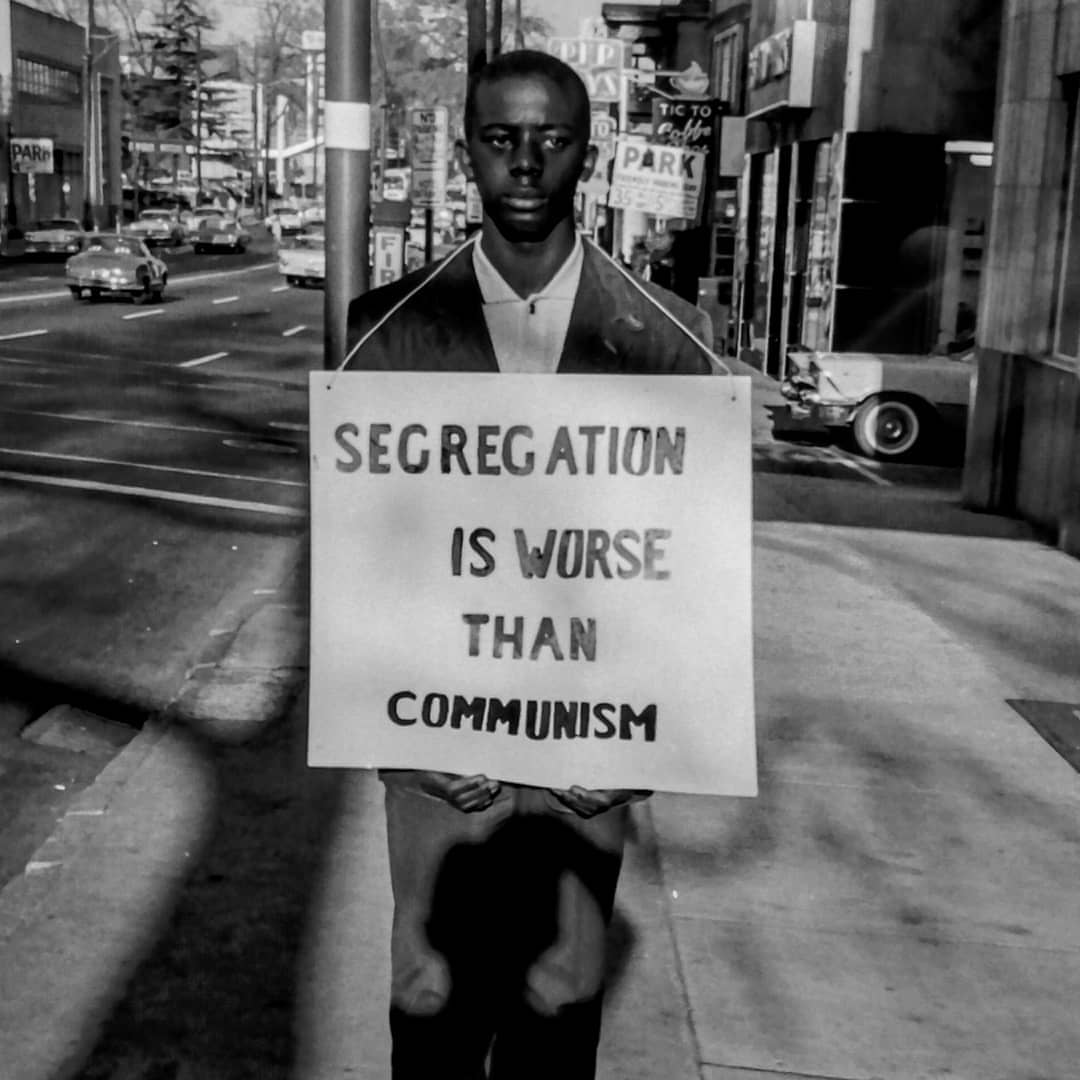
Views: 1346
Preface
It is a very linguistic fact that the term “race” exists in all languages derived from the Latin one. For instance, the meaning of this term is identical in English and French like in some other languages or very similar regarding the meaning. However, the term “race”, basically, refers in all of those Latin derived languages to a group of people who are sharing a common origin. Nevertheless, therefore, the term is not clearly distinguishable from very similar terms of “ethnicity” or “nationality”.[1]
Before 1945
Historically, it was not up to the mid-19th century that any account of race became to a certain extent generally accepted in Europe and later across the world mainly due to the development of biological theories that reached their peak in the book by Charles Darwin: Origin of Species (1859).[2] Both French Comte de Gobineau and British Ronald Knox argued in their works that races of human beings have been of crucial difference. Basically, they suggested that people of different races are going to be understood and more important treated in different ways. For instance, French Gobineau argued that Aryans have been attached to spirituality and freedom, while the black races have been unintelligent in comparison to the Aryans (mostly Europeans). At the same time, he argued the Asian Yellow races were unimaginative and materialistic.[3] Races, in this sense, occur in many species. They consist of any group with common genetic characteristics.
However, ideologically, the concept of race used in such West European way, creates the possibility of both racialism and racism, which can be, in essence, differentiated.
Racialism is, in general, the ideological doctrine that stresses that racial categories are important in determining human behavior. Racism can be defined as the intention to identify himself/herself racially and to show at the same time hostility or at least lack of moral respect for members of other racial groups.
As a matter of fact, the history of the nature of man established the position of a common origin of species and, therefore, biology did not discover any evidence for the morally significant genetic differences between races which have been claimed to exist by the 19th-century racialist theories.[4] Subsequently, alleged genetic differences between the racial groups are, in fact, a product of social construction rather than of biology. Nevertheless, such differences as exist are basically superficial and cannot be reasonably taken into account in order to justify the different moral treatment of people on racial grounds. What geneticists would say is that all humans are most probably descended from the same human origin who lived in Africa around 200.000 years ago and that the different peoples were not lived and bred so separately as it is suggested by all racialist and racist theories.[5]
Many textbooks in the West-European culture divided Europeans into “Alpine”, “Nordic”, “Slavic”, or “Mediterranean” racial types. In the UK, for instance, exists a racial difference between “Anglo-Saxons” and “Celts” (in fact, between Englishmen and Scottish/Irish). The use of such terms is, however, an extreme example of the mythology which is, in fact, accentuating racial terminology.
In West Europe and the USA, since the mid-19th century, much of the politics of race became a direct product of ideological racialism but the situation became very paradoxical one as at the same time in West Europe existed strong requirements for the democratization of political life and in the USA existed influential political movement fighting for the abolition of slavery and against racial discrimination.[6] It was a historical time when the West Europeans were running for their overseas colonial empires while the Americans issued a manifesto by which claimed to dominate over both continents of the Americas.[7] A justification was required to treat (West) Europeans as equal, but non-(West)Europeans as racially inferior to them. For instance, in British India, after the local rebellion against the British colonial authorities in 1857, a British Empire was declared based on an extreme separation between the “Whites” and the “Natives”. The same scale of segregation was introduced in the southern states of the US and racialist theory was (mis)used to formally justify the position of the “Red skins” Indians in comparison to the white inhabitants, which finally fostered a genocide in some extreme cases.
In all of those West European overseas colonies like in Africa, there was an extremely shared assumption that the local “natives” have been racially inferior compared to the white European colonists. Belgium Congo, for instance, was probably the most extreme case of West European shame in this sense.[8] However, the climax of West European racism happened during the existence of the Nazi German Third Reich which was politically and economically supported by the Western democracies of the UK, France, and the USA. The Nazi German regime accepted in full the West European ideological framework of anti-Semitism that was developed by such writers as, for instance, the British Houston Stewart Chamberlain (1855−1927), which became the accepted policy of Hitler’s Germany[9] which understood the very existence of the Jewish race as a direct threat to German identity and prosperity. The anti-Semitic policy of Nazi Germany, based on racial discrimination, culminated during WWII in the extermination of the European Jews as a “Final Solution” to the “Jewish Question”.[10]
After 1945
After WWII and the collapse of the German Nazi Third Reich ideologically founded on the racial evaluation and discrimination, racialism as academic discipline lost its scientific and moral respectability in international intellectual elites. Therefore, it can be said the racialism as academic discipline existed for one century since the mid-18th century up to the mid-19th century. Nevertheless, racism as a practical implementation of the racialist theories remained extremely alive (as in the USA, for instance, at least up to 1970s) regardless of the very fact that such practice lost its coherent theoretical foundations or even categories and racism became a synonym for ethnic chauvinism and/or nationalism in many cases.[11]
The politics of race after WWII is the politics of post-racialist racist institutions. Globally speaking, the most notable anti-racist post-WWII policy is visible in the example of South Africa (former British colony) run by the local native Black population against the institution of apartheid – a policy of total segregation on the racial (black-white) relations in all public spheres of life. However, apartheid practice was officially justified in purely cultural terms, but in practice, it operated on clear racial criteria which, for instance, prohibited interracial marriage (like in Nazi Germany). The apartheid system of racial discrimination existed in South Africa despite the opposition of a vast majority of the country’s inhabitants (the blacks) followed by the majority of the international community member states.
Nevertheless, in many respects, the position of the states in the Deep South in the USA was a replica of the South African case of apartheid till the 1970s when the Civil Rights program was started to be implemented what meant a formal dismantling of the Southern segregation but in practice, it left alive in many places and forms. From the beginning of the 1980s, in the USA the politics of race was focused on the so-called “positive” moves for the sake to create social, political, and economic equality primarily for the black (Afro-American) population (mixed schools, quota system, the proclamation of equal political and legal rights and so).
In West Europe, many states introduced post-imperial politics of race in order to deal with the influx of immigrants from their ex-colonies and other states from Asia and Africa primarily but Latin America as well (Brazilians to Portugal). Only by the mid-1970, these groups of immigrants including and economic guest workers from other parts of Europe amounted averagely up to 5% in West European countries but the tendency was rising in all cases and, therefore, today, for instance, there are at least 5% of Arabs in France or 12% foreign workers in Germany out of the total population. However, their rapidly growing number from year to year created racist attitudes among huge sections of domestic “white” population followed, as a response, anti-racist campaigns by the immigrants and liberal allies.
Final remarks
As a matter of conclusion, racism has shown its ability to survive and to change its faces in politics[12] across the globe long after the formal and legal demise of racialism as both a serious intellectual standpoint and academic discipline.
Observing growing racist tendencies that affect most of European societies and states, it can be said that European unification, in so far as it exists today in a form of the EU, and the growth of racism and anti-immigration sentiments are clearly distinct phenomena. Therefore, it would be artificial and fruitless to connect them too directly. Finally, just to remind ourselves about elementary forms of racism and xenophobia as they are: harassment, stereotypes, discrimination, and/or political racism.
Ex-University Professor
Research Fellow at Centre for Geostrategic Studies
Belgrade, Serbia
www.geostrategy.rs
sotirovic1967@gmail.com
© Vladislav B. Sotirovic & Al Mayadeen English 2023
[1] See, for instance, [Montserrat Guibernau, John Rex (eds.), The Ethnicity Reader: Nationalism, Multiculturalism and Migration, Malden, MA: Polity Press, 1997].
[2] Charles Darwin (1809−1882) derived the theory of the evolution of the animals and plants by natural selection. Ideological Darwinism is understood both as a general doctrine about human beings and nature and as well as a specific theory of biological evolution. The theory suggests a universal law applied to all animate phenomena. Darwinism, basically, was suggesting one natural law of development for all forms of life – human or animal, no matter. Ch. Darwin himself took a standpoint that man and other animals have been netted together. However, many Darwinists held that there were no longer foundations for elevating one species above another using certain criteria. As a kind of biological theory, Darwinism shifted the biologist’s concern from a concentration on specific types to a concentration on populations whose boundaries have been neither fixed nor predetermined. In fact, the population is evolved by natural selection of favorable, heritable variants. From a racial point of view, since 1880 exists the term “Social Darwinism” – used as a pejorative tag in order to mean the belief, based on (mis)reading of Charles Darwin, that natural selection entails the elimination of weak social, national and other groups, by stronger ones (like among the animals). About Social Darwinism, see more in [Garrett Wallace Brown, Ian McLean, Alistair McMillan (eds.), The Concise Oxford Dictionary of Politics and International Relations, Fourth Edition, Oxford, UK: Oxford University Press, 2018, 511−512].
[3] Ernest Seillière (ed.), Le Comte de Gobineau Et l’Aryanisme Historique, Forgotten Books, 2017. It has to be stressed that Gobineau was an opponent of slavery and a person who rejected anti-Semitism. Joseph Arthur Comte de Gobineau (1816−1882) was a French diplomat and scholar. He was the intellectual founder of racism. His most famous book, Essay on the Inequality of Human Races (1853−1855), put forward the thesis that different human races are innately unequal and that the White Aryan race is not only the purest but as well as superior in comparison to all other races in the world. In fact, his theory and writings had a great impact on the Nazi German ideology during the interwar period and justification of Nazi German policy of anti-Semitism (in fact, anti-Judaism) during WWII including holocaust practices.
[4] About the racist culture, see in [David Theo Goldberg, Racist Culture: Philosophy and the Politics of Meaning, Blackwell, 1993].
[5] In some cases, like in the USA, the policy of positive discrimination based on the racial background and origin is very much criticized as such system negates the principles of both equality and merit, and even further, that it permits whole sections of society to avoid real competition, which in turn is fostering racial prejudices. In the USA, however, positive discrimination is an institutionalized way to enable those historically disadvantaged by a political system in order to participate in the public and political life of the country in the general or local community in particular. Nevertheless, positive discrimination implies applying different criteria for selection to representatives of different groups (for instance, quota system, etc.) as a way of addressing the existing social inequalities or in a broader sense, political problems which are in many cases based on the racial background and discrimination. About the policy of positive discrimination, see more in [Stella Carm Abduch, Positive Discrimination: A Comparative Perspective Between the United States, Brazil and France, Master Degree Thesis, Toulouse University, 2011].
[6] See in more detail in [Bernard Mandel, Labor, Free and Slave: Workingmen and the Anti-Slavery Movement in the United States, Chicago: University of Illinois Press, 2007; Enid Lane, The Basic Arguments of the Anti-Slavery Movement in America, Rekindled Media, 2013].
[7] That was (in)famous the 1823 Monroe Doctrine or the US foreign policy declaration by which Washington warned West European Great Powers against further colonization in the Americas and at the same time against intervention in the areas of the American hemisphere. The declaration as well as disclaimed any intention of the USA to interfere with the political affairs of Europe. The background of the doctrine was, in fact, annual speech by the POTUS James Monroe’s to Congress in 1923 about the threat of intervention by the post-Napoleonic Holy Alliance of the European Great Powers in order to restore Spain’s South American colonies and the colonial policy of Russia in Alaska. The proclaimed doctrine of “America to Americans” became soon developed into a foreign policy in which the USA treated itself as only responsible for the security in the Americas from Alaska to Patagonia. Such policy consistently up today is complicated US relations with all Latin American countries and their Governments. About the Monroe Doctrine, see in [Jay Sexton, The Monroe Doctrine: Empire and Nation in Nineteenth Century America, Hill and Wang, 2012]. James Monroe (1758−1831) was a US Democratic-Republican statesman and the 5th POTUS from 1817 to 1825. He is remembered for two reasons: 1) in 1803 as minister to France under POTUS Jefferson he negotiated and ratified the so-called Louisiana Purchase, by which vast territory formerly in French possession was sold to the USA, and 2) as the originator of the Monroe Doctrine in 1823. About James Monroe’s life, see in [Tim McGrath, James Monroe: A Life, New York: Dutton, 2020].
[8] About history of Belgian Congo, see in [Alan Isaacs et al (eds.), A Dictionary of World History, Oxford−New York: Oxford University Press, 2000, 146−147].
[9] Houston Stewart Chamberlain, The Aryan World-View, Munich: F. Bruckmann A. G., 1938.
[10] See, for instance [Arūnas Bubnys, Vilnius Ghetto 1941−1943, Vilnius: Genocide and Resistance Research Centre of Lithuania, 2018].
[11] About nationalism, see in [John Hutchinson, Anthony D. Smith (eds.), Oxford Readers: Nationalism, Oxford−New York: Oxford University Press, 1994].
[12] See, for instance, [Martin Barker, The New Racism, London: Junction Books, 1981].
Originally published at Al Mayadeen English on 15. 12. 2023
Link: https://english.almayadeen.net/articles/opinion/on-west-european-politics-of-race-and-racism–a-short-histor
Origins of images: Facebook, Twitter, Wikimedia, Wikipedia, Flickr, Google, Imageinjection, Public Domain & Pinterest.
Read our Disclaimer/Legal Statement!
Donate to Support Us
We would like to ask you to consider a small donation to help our team keep working. We accept no advertising and rely only on you, our readers, to keep us digging the truth on history, global politics, and international relations.
FOLLOW US ON OUR SOCIAL PLATFORMS











